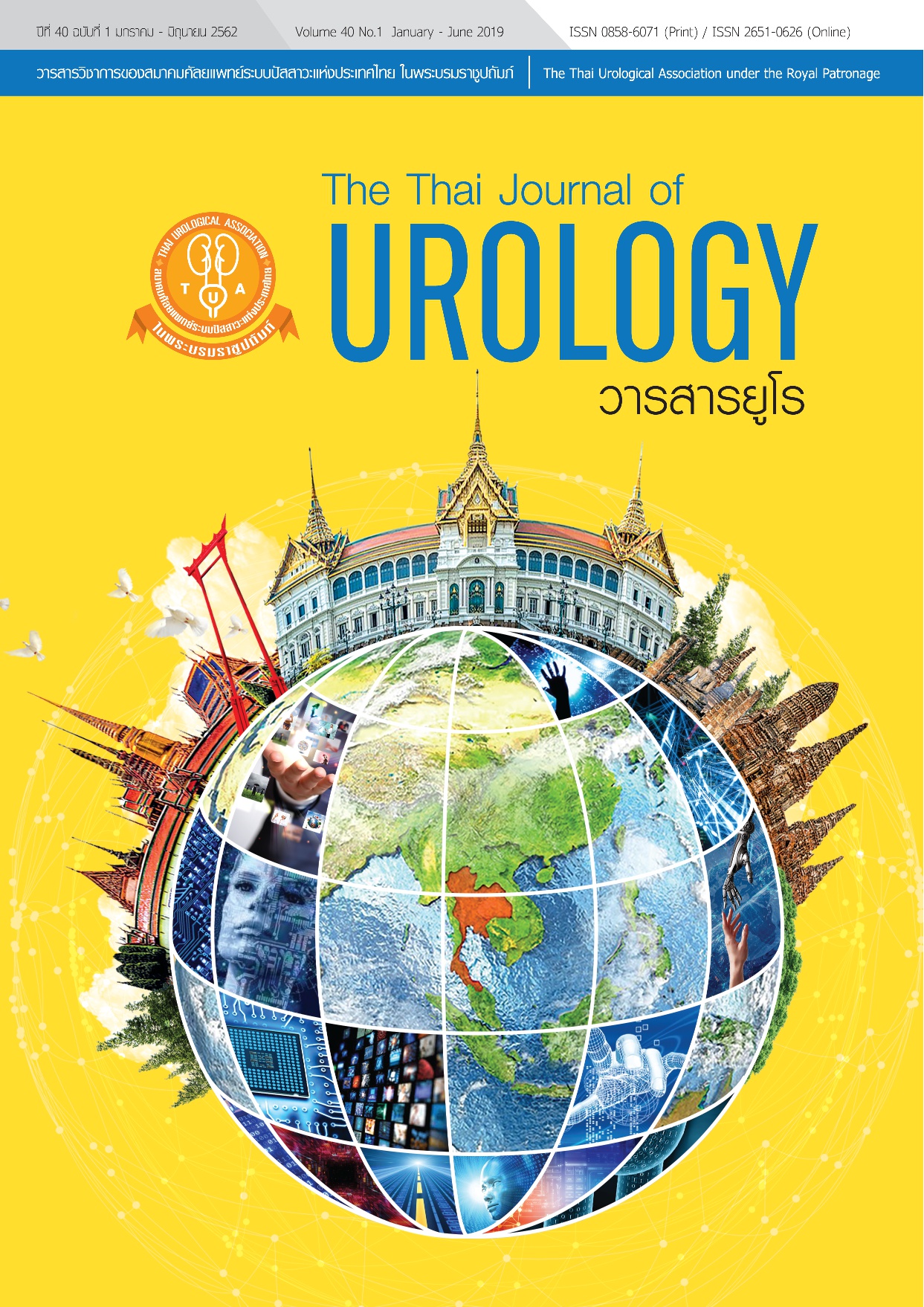Outcome of extraperitoneal laparoscopic radical prostatectomy :single-surgeon initial experience for the first 100 cases
Keywords:
laparoscopic radical prostatectomy, prostate cancer, learning curveAbstract
Objective: To evaluate the outcome of technical feasibility, oncologic effectiveness, and perioperative and postoperative morbidity in the first 100 cases of a single surgeon.
Material and Method: This retrospective study collected data from the first case series of patients who underwent laparoscopic radical prostatectomy (LRP) by a single surgeon at the same institution from October 2011 to April 2013: 100 patients with clinically localized prostate cancer, including age, preoperative prostate-specific antigen (PSA), prostate volume, Gleason score, operation time, blood loss, surgical margin, incontinence rate, erectile function and complications.
Result: The mean age was 64.37 (43-77) years. Mean preoperative PSA was 4.2-370 ng/mL and prostate volume was 10-132 (39.01) mL. The mean operative time was 229 min. Mean blood loss was 487.52 mL. There were five surgical complications, four rectal injuries (first 30 cases) and one conversion to open surgery (5 of 100 cases).
Conclusion: We think that extraperitoneal laparoscopic radical prostatectomy requires a highly experienced surgeon in order to improve the outcomes of surgery.
References
2. Imsamran W, Chaiwerawattana A, Wiangnon S, et al. Cancer in Thailand. Volume VIII, 2010-2012, Bangkok; 2015 (in Thai): p.10
3. Catalona WJ, Han IM. Definitive Therapy for Localized Prostate Cancer. In: McDougal W, Wein A, Kavoussi L, et al. Campbell-Walsh Urology, 10 ed, Saunders: 2012: pp. 2775.
4. Guillonneau B, Vallancien G. Laparoscopic radical prostatectomy: The Montsouris experience. J Urol 2000;163:1643-1649.
5. Rassweiler J, Sentker L, Seemann O, et al. Laparoscopic radical prostatectomy with the Heilbronn technique: an analysis of the first 180 cases. J Urol 2001;166:2101-2108.
6. Akita H, Okamura T, Naiki T, et al. Evaluation of the outcome of laparoscopic radical prostatec-tomy by a single surgeon: Experience with an Initial 30 Cases. J Rural Med 2010;5: 134-139.
7. Mottet N, Bellmunt J, Briers E, et al. European Association of Urology Guidelines on Prostate cancer. 2017, P.36.
8. Sokoloff MH, Brendler CB. Indications and contraindications for nerve-sparing radical prostatectomy. Urol Clin North Am 2001;28: 535-543.
9. Stoykov BA, Nikolay KH, Vladislav DR, et al. Application of erection hardness score as a diagnostic tool to assess erectile function recovery after robot-assisted radical prostatectomy. Biomed J Sci & Tech Res 3-2018. BJSTR.MS.ID.000830.DOI:10.26717/BJSTR. 2018.03.000830.
10. Roberts WB, Tseng K, Walsh PC, et al. Critical appraisal of management of rectal injury during radical prostatectomy. Urol 2010;76: 1088-1091.



